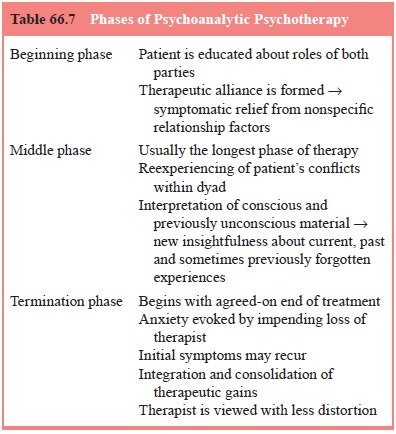Chapter: Essentials of Psychiatry: Individual Psychoanalytic Psychotherapy
How Does Psychoanalytic Psychotherapy Differ from Psychoanalysis?
How
Does Psychoanalytic Psychotherapy Differ from Psychoanalysis?
The
answer to this question has occupied many researchers and psychiatrists
throughout the last 50 years. Efforts have been made continually not only to
elucidate the differences between the two treatments but, more important, to
define the underlying princi-ples of psychoanalytic psychotherapy. Whereas some
prefer defi-nitions of psychoanalysis and psychotherapy as distinct separate
entities, it is more useful to many psychiatrists to conceptualize
psychoanalysis and psychoanalytic psychotherapy as residing on a therapeutic
continuum. As discussed, there is much in the conduct of psychoanalytic
psychotherapy that has been borrowed from psychoanalysis. Free association,
clarification and interpre-tation in psychoanalytic psychotherapy are such
examples. The centrality of transference is another, although early
psychiatrists and researchers advocated that transferences were to be
recog-nized and acknowledged in psychoanalytic psychotherapy and “managed”
rather than interpreted so that patients were not sub-ject to the intense
therapeutic regressions characteristic of psy-choanalysis. Today, such a
distinction regarding the approach to transference in psychoanalytic
psychotherapy is less rigid.
On the
other hand, certain supportive and more directive techniques, such as greater
activity of the therapist through fo-cusing the patient on specific current
problems and relationships, reassuring and affirming the patient, and the
giving of advice, are used much more in psychoanalytic psychotherapy than in

psychoanalysis.
Therefore, the adherence to the therapist’s neu-trality is less strict, and as
a result, there is often but not always less frustration for the patient in
psychoanalytic psychotherapy. The length of treatment may not distinguish the
two approaches, but the frequency of sessions (four or five per week) and the
use of the couch, however, are characteristic of psychoanalysis (see Table
66.7).
Overall,
it is fair to say that psychoanalytic psychotherapy
·
Places greater emphasis on the here and now in
terms of the patient’s current interpersonal relationships and experiences
outside of the therapy; whereas in psychoanalysis, there is greater emphasis on
the experiences within the analysis and the relationship between analyst and
analysand;
·
Incorporates,
more than does
psychoanalysis, vari-
·
ous other techniques from other dynamic and
behavioral psychotherapies;
·
Emphasizes the usefulness of focusing on current
(dynamic) problems and less on genetic issues; and
·
Establishes more modest goals of treatment.
The last
point is particularly important in that it facilitated the development of brief
dynamic psychotherapies which address focal problems generally in up to 20
sessions.
Related Topics